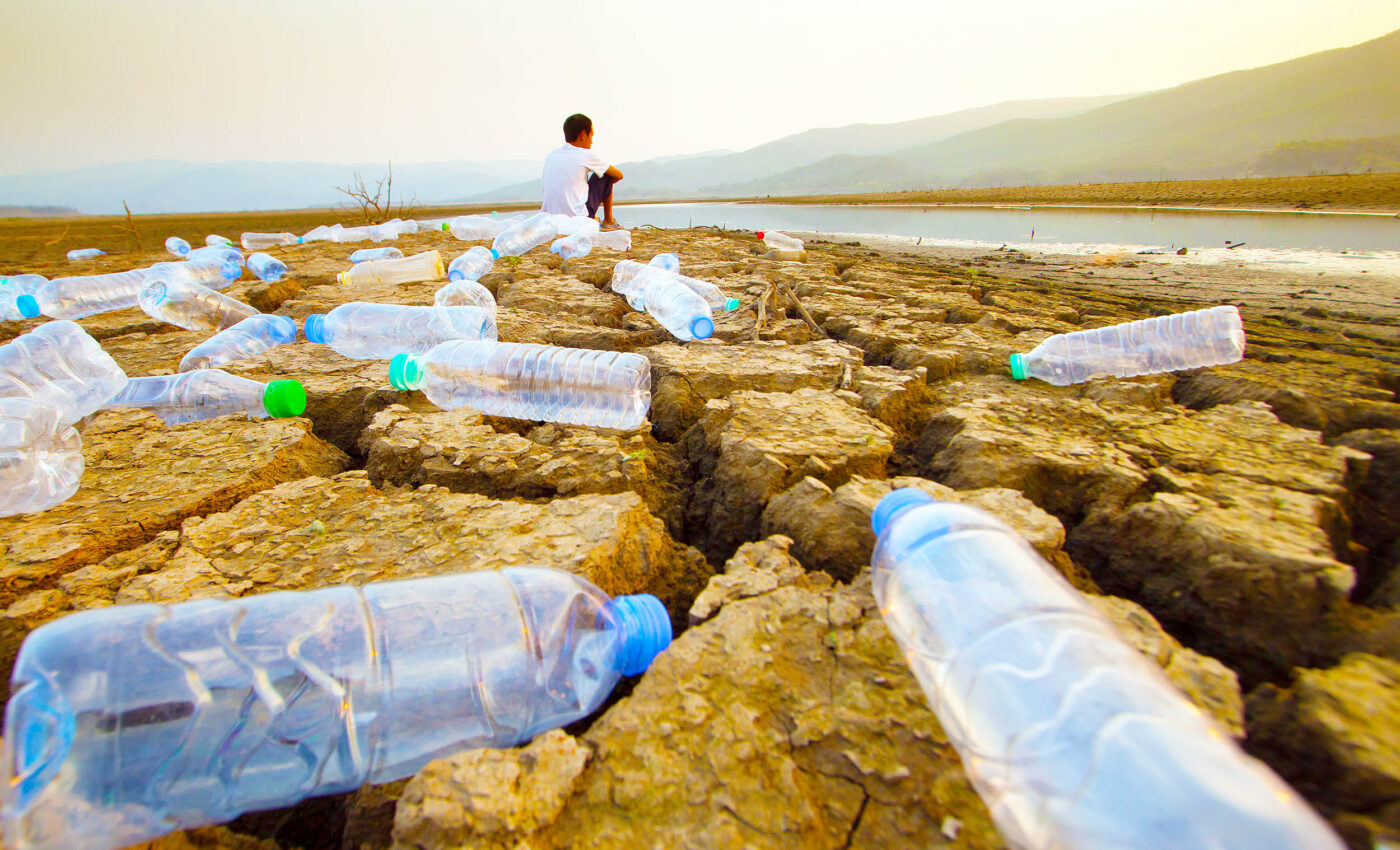
Plastic pollution and global warming are linked in a vicious cycle
Global warming and plastic pollution, two critical environmental challenges, now clearly intertwine, forming a vicious circle where each exacerbates the other.
Researchers in Sweden have published a comprehensive study in the journal Nature Communications, revealing the mutually reinforcing relationship between these issues. This cycle not only intensifies global warming and material degradation but also increases plastic waste and toxic chemical leakage into our environment.
Vicious circle between warming and plastic pollution
The study was led by Xinfeng Wei, from the KTH Royal Institute of Technology in Stockholm. With rising global temperatures, plastics – materials we depend on daily – deteriorate more quickly.
This deterioration demands the production of more plastics. Additionally, it significantly increases greenhouse gas emissions, further heating our planet.
“A self-reinforcing cycle is formed, creating a vicious circle between climate change and plastic pollution,” Wei explained.
Emissions on the rise: The plastic contribution
In 2019, the OECD reported that plastics contributed to 3.4% of global greenhouse gas emissions, about 1.8 billion tons, primarily due to their production and fossil fuel conversion. Alarmingly, this figure is expected to more than double by 2060.
The research underscores the interconnected escalation of heat, moisture, and the weakening of polymers – materials like plastic and rubber, which consist of long molecular chains.
Wei highlights the issue, stating: “The higher the increase in temperature, the more the materials’ properties are compromised.”
With common plastics such as polyethylene, polypropylene, and polyvinyl chloride, a temperature rise from 23°C to 40°C leads to a stiffness decrease of over 20%. Consequently, items made from these polymers, like clothing, auto parts, and appliances, require more frequent replacement, driving up manufacturing demands.
Ripple effects of global warming and plastic pollution
The repercussions extend far beyond manufacturing challenges. Increased temperatures and plastic deterioration lead to several issues. Specifically, they cause unreliable food packaging, fouled waterways, and a surge in microplastics contaminating fish habitats.
Moreover, the study documents the release of volatile organic compounds (VOCs) and other hazardous substances, such as lubricants and plasticizers, into the air, soil, and water. Heat exacerbates this issue by accelerating their diffusion, evaporation, and leaching.
Wei noted the compound effects of increasing heat and moisture from global warming. A warmer atmosphere enhances moisture evaporation and water vapor capacity, posing challenges for polymers.
United for change: A call to action
To confront the intertwined crises of plastic pollution and global warming, the study emphasizes the need for urgent attention. It advocates for concerted action across all sectors involved in the plastic lifecycle.
It’s clear that mitigating these escalating threats requires a holistic and collaborative approach. There is a critical need for innovation and regulation in addressing one of the most pressing environmental challenges of our time.
More about plastic pollution
Plastic pollution has far-reaching impacts on ecosystems, wildlife, and human health. Here are some key facts about plastic pollution:
Scale of the problem
Every year, about 380 million tons of plastic are produced globally, and a significant portion of this ends up in the oceans. It’s estimated that up to 12 million tons of plastic enter the oceans each year.
Longevity of plastics
Plastics can take anywhere from 20 to 500 years to decompose in the environment, depending on the type of plastic. This longevity contributes to the accumulation of plastics in our oceans, waterways, and landscapes.
Impact on marine life
Marine animals, including fish, seabirds, sea turtles, and marine mammals, can ingest or become entangled in plastic debris, leading to injuries, starvation, and death. It’s estimated that over 100 million marine animals are killed by plastic waste each year.
Microplastics
These are tiny plastic particles less than 5mm in size, which result from the breakdown of larger plastic waste or are manufactured for use in products like cosmetics.
Microplastics have been found in tap water, bottled water, and even in the air we breathe, posing potential health risks to humans.
Economic costs
The economic impact of plastic pollution affects tourism, fisheries, and shipping industries. The United Nations Environment Programme (UNEP) estimates the economic damage of plastic pollution to marine ecosystems at $13 billion per year.
Recycling challenges
Despite efforts to improve waste management and recycling, only about 9% of all plastic waste ever produced has been recycled. The rest is incinerated, dumped in landfills, or ends up in the environment.
Legislation and initiatives
Many countries and regions have introduced legislation to reduce plastic waste, such as banning single-use plastics (e.g., plastic bags, straws, and cutlery) and implementing plastic bag levies.
Additionally, there are global and local initiatives aimed at cleaning up plastic pollution and promoting alternatives to plastic.
Role of individuals
Individuals can make a difference by reducing their plastic use, recycling properly, participating in beach clean-ups, and supporting policies and organizations that aim to tackle plastic pollution.
The study is published in the journal Nature Communications.
—–
Like what you read? Subscribe to our newsletter for engaging articles, exclusive content, and the latest updates.
Check us out on EarthSnap, a free app brought to you by Eric Ralls and Earth.com.
—–













